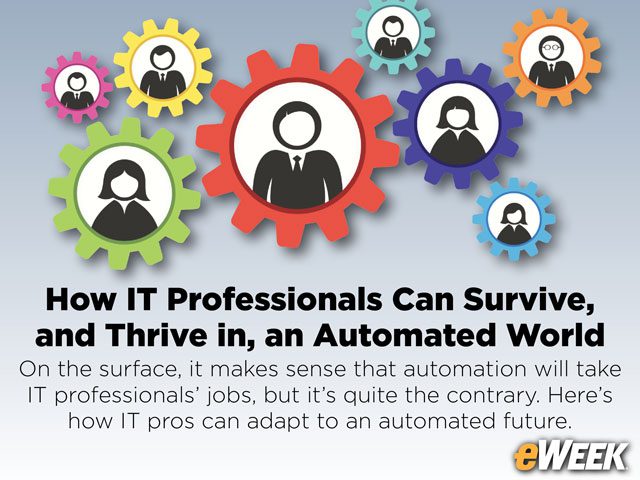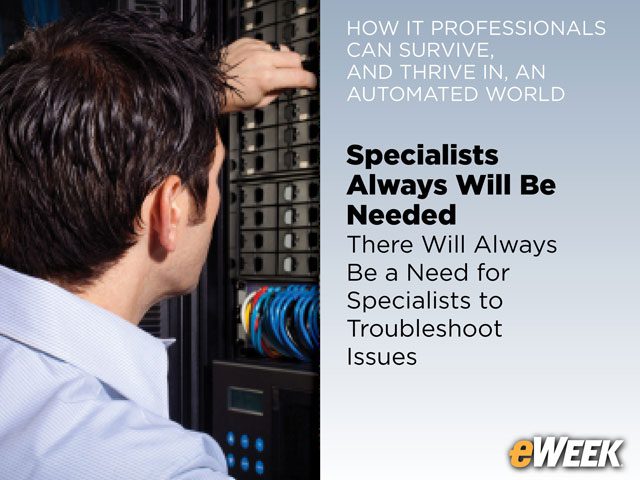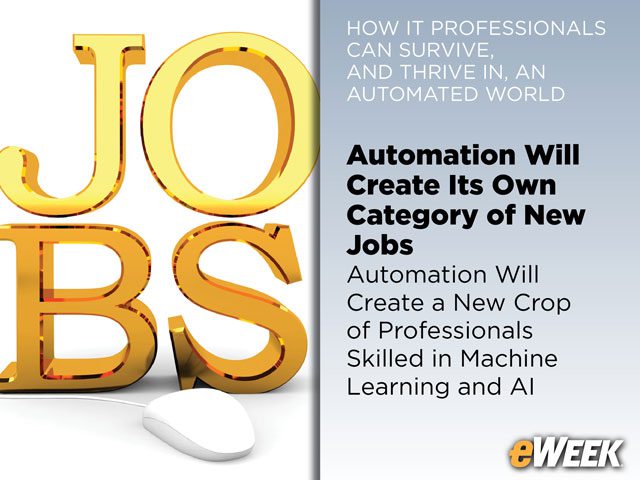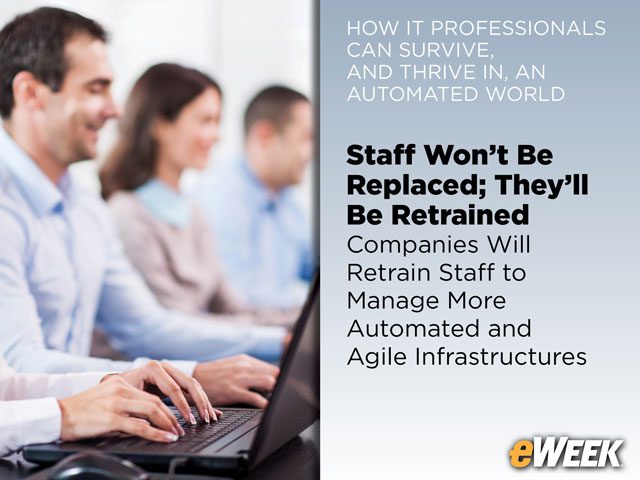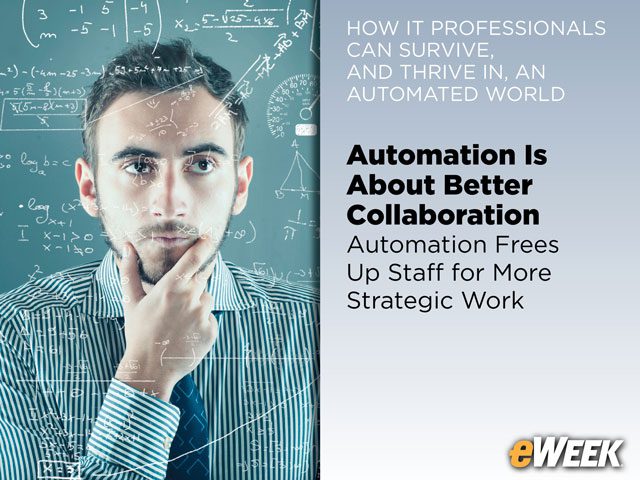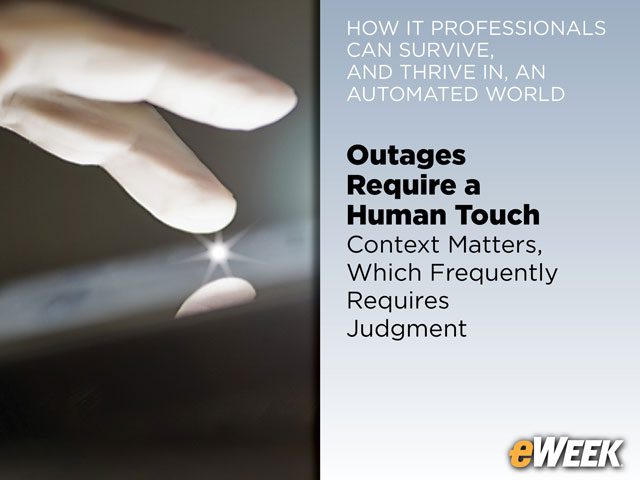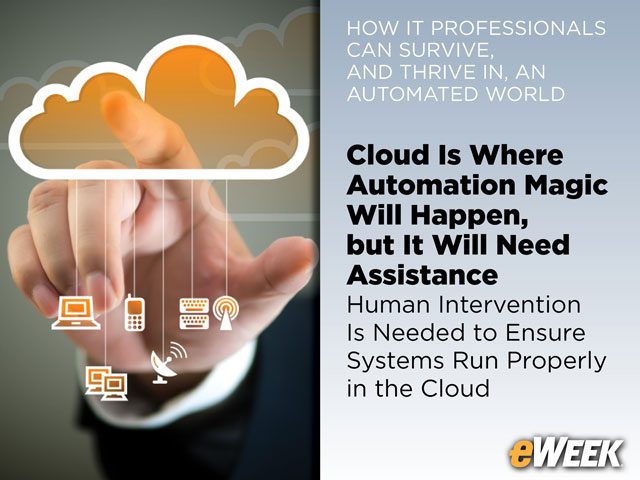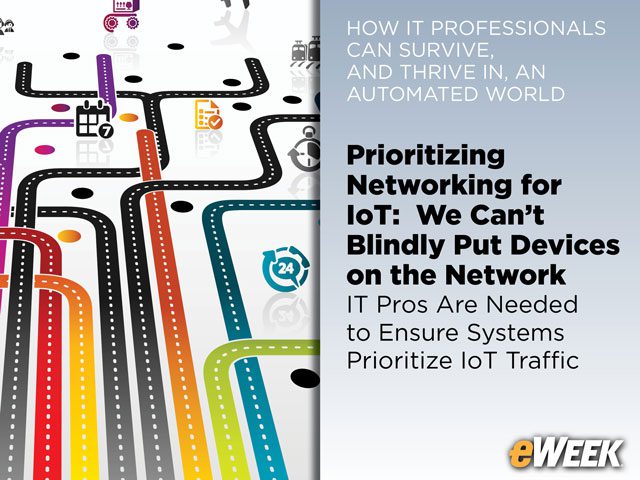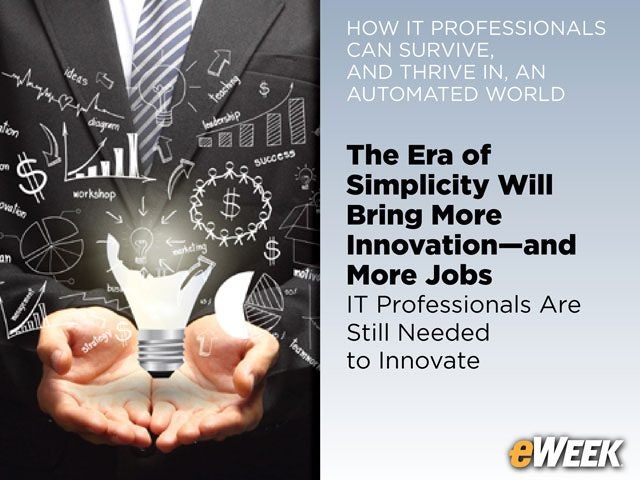eWEEK content and product recommendations are editorially independent. We may make money when you click on links to our partners. Learn More.
1How IT Professionals Can Survive, and Thrive in, an Automated World
For network engineers who’ve seen the recent IBM Watson commercial where the mystical cube detects and remediates thousands of security threats automatically, it would be easy to think that the robot overlords are set to take their jobs. Well, that’s only partly true. Networking and IT staff typically include lists of manual tasks and CLI (command-line interface) inputs that draw time and effort away from bigger problems, so naturally the more a machine can handle that, the better. But humans won’t flee for new jobs as quickly as some automation advocates believe. The future of automation mandates that network engineers adapt and acquire new skills to thrive. In this eWEEK slide show, using industry information from Michael Bushong, vice president of enterprise marketing at Juniper Networks, we offer nine ways humans can adapt to an automated future.
2Specialists Always Will Be Needed
Companies that adopt an automation agenda will find that they can move from device-led to architecture-led, and eventually to operations-led systems. But there must be specialists such as network engineers who still understand the protocols and can troubleshoot as needs arise. Basically, someone still must know how the switches and routers function.
3Automation Will Create Its Own Category of New Jobs
According to McKinsey Research, artificial intelligence (AI) and automation could actually help create 20 million to 50 million new jobs globally both for in-house IT workers and externally as outsourced tech consulting jobs.Organizations will need to hire a new crop of professionals to manage automation for it to reach its full potential. There soon will be a new category of IT worker that is grounded in the infrastructure but particularly skilled in the application of machine learning and artificial intelligence. Larger enterprises may even choose to add a Chief AI Officer or other senior-level executive to oversee and guide AI and associated automation strategies for existing products.
4Staff Won’t Be Replaced; They’ll Be Retrained
New research from the 2018 World Economic Forum found that 95 percent of workers with jobs impacted by automation will be able to find good-quality, higher-wage work with adequate reskilling. As computing infrastructures move to become more automated and agile in the cloud era, companies will still need IT personnel to manage it. In fact, companies will invest even more in their existing employees, educating and retraining their staff so they are proficient across heterogeneous environments that make greater use of integrated tools and automated workflows. This can include helping staff learn coding languages for DevOps functions that might require the need to build new automation scripts.
5Automation Is About Better Collaboration
Automation is most useful at the boundary of two things: two people, two systems, two organizations. For example, connecting a server requires coordination between server and networking teams. The actual keystrokes to provision the network are not particularly complex; it’s more the time involved in turning up servers to coordinate efforts and conduct reviews of proposed changes. Automating this process removes some of the coordination and frees up staff for more strategic work, and that is where the benefit is the greatest.
6Outages Require a Human Touch
If the S3 outages at AWS have taught us anything, it’s that cloud and automation do not free us of our responsibility to provide sound architectural design. This is a human undertaking. While you can automate the easiest remediation, those are not the ones that bring companies to their knees. Machines are good at finding things that match patterns, but what happens when there is no pattern to match? The point is context matters, and that frequently requires judgment.
7Cloud Is Where Automation Magic Will Happen, but It Will Need Assistance
Companies will require human intervention to ensure systems operate like a well-oiled machine in the cloud. According to recent research by PwC, to increase business agility, enterprises not in the cloud will have to move some or more of their workloads to either public or private clouds in the next three years. Having automated processes to simplify how workloads are uploaded and distributed in the cloud will require personnel with intimate knowledge of business objectives and priorities to ensure long-term success. Automated processes will help keep their eye on the prize and workloads producing results.
8Prioritizing Networking for IoT: We Can’t Blindly Put Devices on the Network
From policy management to troubleshooting, billions of internet of things (IoT) devices will require a more automated network. Gartner projects 20.4 billion connected things will be used worldwide by 2020. For network systems, blindly bringing IoT devices online will clutter networks with noisy, low-priority traffic. As a result, IT professionals will be critical to fine-tune algorithms to ensure systems rightfully prioritize (or deprioritize) certain IoT traffic to ensure networks always have capacity.
9The Era of Simplicity Will Bring More Innovation—and More Jobs
AI and automation promise to greatly reduce the complexities of computing systems, especially as more organizations transition to the cloud. This, however, means that humans still need to innovate, understand these systems and ultimately make the final call on how new tools and applications need to operate in these environments. While it means that IT professionals will need to learn some new tricks, their knowledge and services will continue to be valuable for years to come.
10See Something, Do Something
The monitoring aspect of automation is still critical to ensure everything operates as needed, and infrastructure architects will still be needed to ensure systems start with the right inventory of data that is available to map back to those workloads. IT is complex, though tooling promises to help. Until that is a reality, businesses need people to understand the data and put it into context because programming in an overly complex world doesn’t change the complexity—it just automates the failures.
